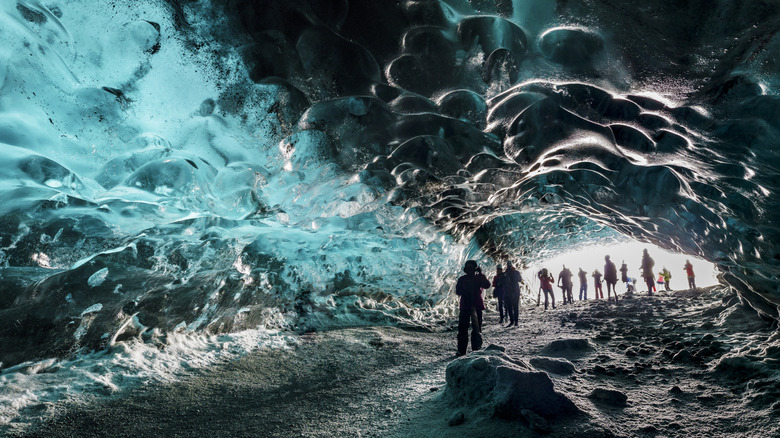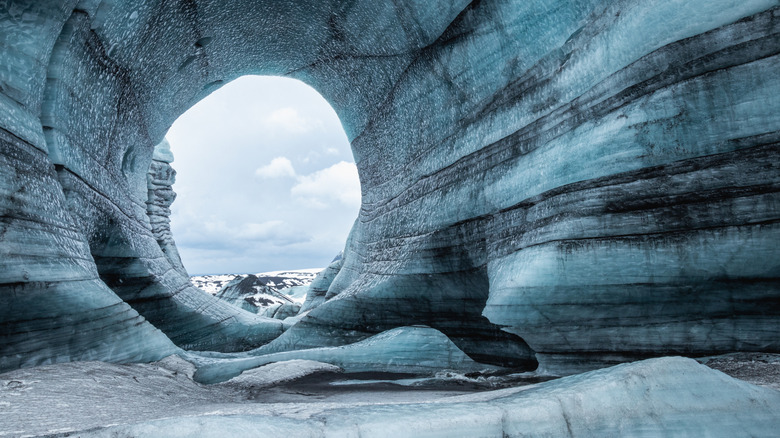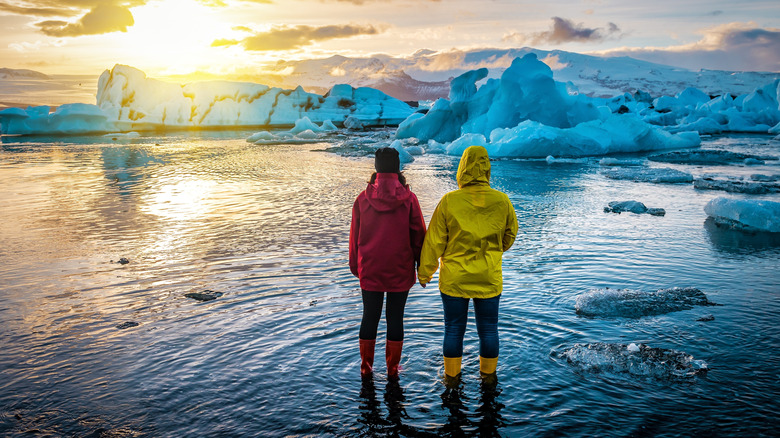The small nation of Iceland is a bucket list trip for many travelers, and with good reason. As travel pro Rick Steves says, Iceland’s “small island syndrome” makes exploring it a joy. Iceland’s mystique comes from its unique geography of simmering volcanoes and vast glaciers with tunnels of blue ice. All of which is easily reachable within a few hours of driving.
Visitors wanting to experience the ice caves of Iceland will need to fly to Reykjavik first. From there, visitors have a choice of locations. The Katla ice cave inside the Kötlujökull glacier is one of the most accessible and popular to visit, open even in the summer. The Vatnajökull National Park, home to Europe’s largest glacier, is further east, and its Crystal Blue Ice Cave is an exceptionally beautiful example of this natural phenomenon. The Langjökull glacier is another good option with both natural and artificial ice caves and tunnels that can be visited year-round.
Whichever area you choose to visit, it’s important to book a guided tour. Visiting these glaciers requires special vehicles, and ice caves can be dangerous to visit without the proper knowledge and equipment. Many tours will pick up from Reykjavik. Others operate from the town of Vik, closer to the Katla Ice Cave, and about a 2.5-hour drive from Reykjavik. Jökulsárlón, about a five-hour drive from the capital, is another popular pick-up point for the Crystal Blue Ice Cave, especially when combined with a visit to the nearby lagoon.
What is an ice cave?
These natural wonders are carved out of glaciers by the melting ice during the summer and rainy seasons. Depending on the amount of meltwater, ice caves can be narrow crevices, barely able to fit a single person, or cavernous tunnels that open up into chambers of ice. This also means that new ice caves are constantly forming, and older ice caves need to be monitored for the risk of collapse from melt. The best season to visit ice caves is in the winter, between November and March, when the ice and snow are thick. Before the season starts, glacier guides monitor the thickness of the walls and formations within the ice cave.
The Katla Ice Cave is unique. It can be visited year-round because of its unique geographic features within the Katla Volcano. The volcanic ash that mixes in with the ice creates eerie layers of grey, black, and white. Even the Katla Ice Cave is subject to changes from meltwater, though, and new passages are created every summer that freeze over in the winter. The only other ice cave that can be visited in the summer is the man-made Langjökull ice tunnel that burrows into a glacier. While an incredible experience of its own, Langjökull won’t have the natural ice formations of a meltwater cave.




